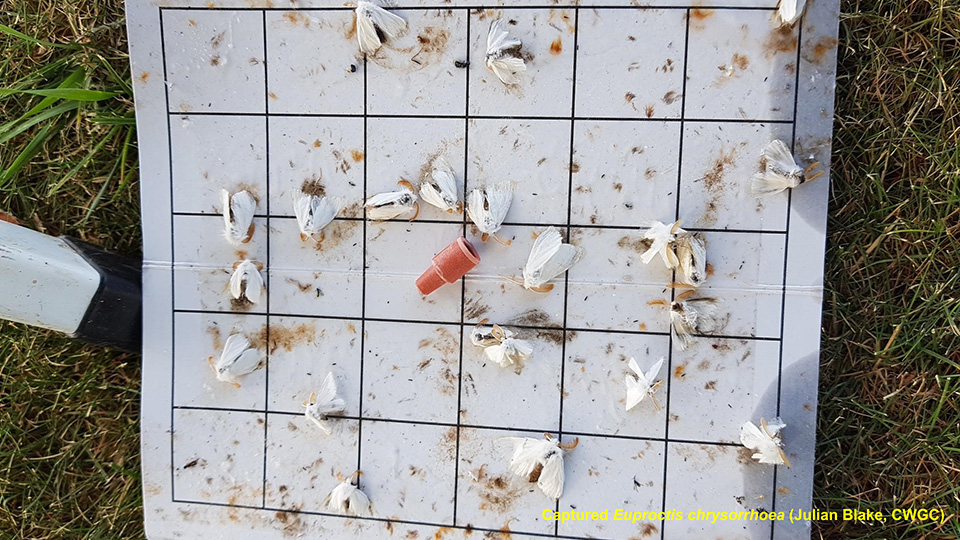Newly available Pherobank products
Chemists of Pherobank have recently synthesised the pheromones for two Euproctis moth species, namely Euproctis chrysorrhoea and Euproctis pseudoconspersa.
1. Euproctis chrysorrhoea (Brown-tail moth)
Dutch name: Bastaardsatijnvlinder
The caterpillar of the brown-tailed moth is equipped with nasty irritating hairs. People can get severe skin irritations should they come in contact with this caterpillar. The larval stage of this insect lasts for nine months, from August through June. In autumn, the caterpillars form colonies of larvae in trees constructed from a single leaf wrapped tightly with large amounts of white silk. In spring, they emerge from the cocoon and grow into large caterpillars. By the end of June, the full-grown larvae start to pupate and a pure white downy moth emerges towards the end of July. The females have a tuft of brown hairs at their hind end.
The pheromone of this species has been originally identified in 1991 by the group of B.A. Leonhardt (J. Chem. Ecol. 17(5), 897-910 (1991)).

- Euproctis chrysorrhoea pheromone lure, Pherobank article #: 50375
- (Z,Z,Z,Z)-7,13,16,19-docosatetraenyl isobutyrate, Pherobank article #: 10710 (limited availability)

2. Euproctis pseudoconspersa (Tea tussock moth or Japanese brown-tail moth)
Euproctis pseudoconpressa is primarily found in Japan, Taiwan, Korea and China. This insect is considered one of the major pests of tea, Thea sinensis in Taiwan. Both larvae and adult moths have "hairs" containing toxins that cause rashes, and even dizziness and nausea in humans.
The pheromone of this species has been originally identified in 1991 by the group of S. Wakamura (Appl. Entomol. Zool. 29, 403-411 (1994)).

- Euproctis pseudoconspersa pheromone lure, Pherobank article #: 50381
- (rac)-10,14-dimethylpentadecyl isobutyrate, Pherobank article #: 21591

